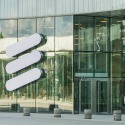
The arrival of 5G and the trans-Pacific trade war are changing the vendor business.
At least that's the experience of Ericsson, a supplier to two South Korean telcos rolling out the world's first 5G networks.
South Korea's early charge into 5G technology has meant the Swedish vendor has changed the way it delivers its solutions.
It is continuously upgrading its network software, a major departure from the traditional approach of "dropping two software versions a year," said Fredrik Jejdling, Ericsson executive VP and head of business area networks.
"In order to keep up continuous improvement of the networks we do it twice per month, every second week.
"It's good early on because when you launch a network you want to make sure you take care of potential issues as soon as you can.
"It's a completely different way of working, very influenced by the IT way of doing things."
So far he believes that the Ericsson kit "is working well. It's quite stable and it's delivering to the expectations in terms of speed, latency, etc."
He says continuous deployment has helped the company to be more responsive to its customers, but adds that not every operator wants it.
Jejdling admits he's a little surprised by the speed of 5G commercialization.
"It's been accelerated quite a bit. If I look back even two years ago we didn't have 5G coming in as early as now."
He says the early deployments are being driven largely by the growth of data traffic and the need to add capacity.
Want to know more about 5G? Check out our dedicated 5G content channel here on
Light Reading.
Beyond 5G, Ericsson's business is feeling the knock-on effects of the US-China trade war.
The company has shifted some production to the US, announcing a new factory to make 5G radio equipment for that market in June. (See US to Get New Ericsson Factory – but Not Many Jobs.)
"It's a more difficult environment to be in compared to what it was a year back, but we have an obligation to our customers to serve them.
"We work a lot with the supply chain. We need to make sure we have integrity of the supply chain depending on what future decisions may or may not be made.
"We already have manufacturing in China to service the Chinese market, which is important to us, and we are already in the EU."
As a global company, "we have to make sure we can supply in whatever conditions" occur.
He says the US factory is intended to showcase industry 4.0 and will be automated and fully connected from the outset.
— Robert Clark, contributing editor, special to Light Reading
About the Author(s)
You May Also Like











